Time signature 12/8 is a well-know meter used in many different types of music. 12/8 contains measures (or bars) that have 12 eighth-note beats. Music in 12/8 combines the 1..2..3 waltz count with the steadiness of 4/4.
We’re going to dive straight into 12/8 time, but you can find more info on what a time signature is in our complete guide to meters.
What is time signature 12/8?
The time signature or meter 12/8 is shown in the music as a 12 above an 8.

This comes before the music starts but after the clef and key signature. The ’12’ stands for 12 beats per measure and the ‘8’ tells us that each beat is an eighth note. This means that the notes in each measure will add up to twelve eighth notes. The eighth notes are grouped into four sets of three.

Now here it is with the strong beats labelled.

How to count in 12/8
12/8, like all meters, has a distinctive feel to it. We count 12/8 as 1…&…a…2…&…a…3…&…a…4…&…a. The short piece below contains more complex rhythms with a variety of note lengths. Can you spot where each beat falls?
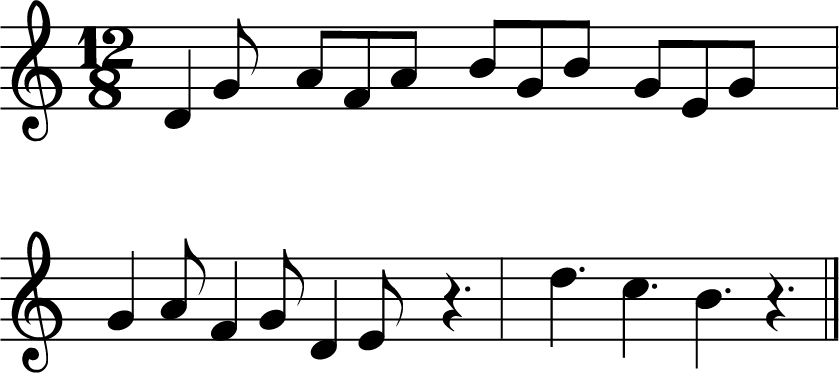
Now here it is with the counting added in.
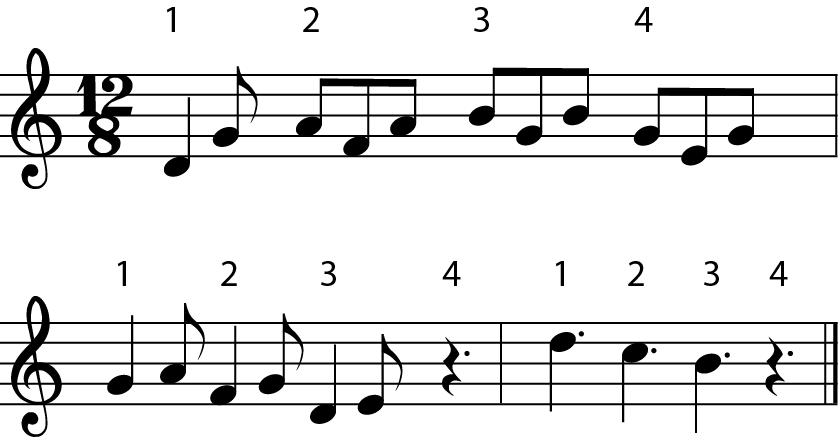
12/8 is a Compound, Quadruple Time Signature
There are three broad types of time signature: simple, compound and irregular. Simple time signatures have beats that divide into two. Compound time signatures have beats that divide into three and complex time signatures have a mixture of beats.
In 12/8 each strong beat is a dotted quarter note and therefore can be divided into THREE eighth notes. This makes 12/8 a Compound Time Signature. It is a Quadruple time signature because there are FOUR strong beats in each measure. To learn more about the differences check out our ultimate guide to time signatures.
The notes below show how each dotted quarter-note beat in 12/8 time can be divided into three eighth notes.

Songs with In Time Signature 12/8
Led Zeppelin – Dazed and Confused
Stevie Wonder – Master Blaster
Tears for Fears – Everybody Wants to Rule the World
Ear Training and Meters
To develop as a musician you’ll want to be able to recognise time signatures by ear. This is where ear training comes in, as the more you practice, the better your’ll get.
My recommendation for this is Tonegym as they have a comprehensive and fun program for training your ears. It’s what has gotten the best results with for my own students.
They have a great game called ‘Rhythmania’, were you have to read rhythms in different meters and tap them back using the spacebar. I like how Tonegym structure the game so it always gives you the right level of challenge.
For an in-depth look at ear training, here’s my full review of Tonegym.
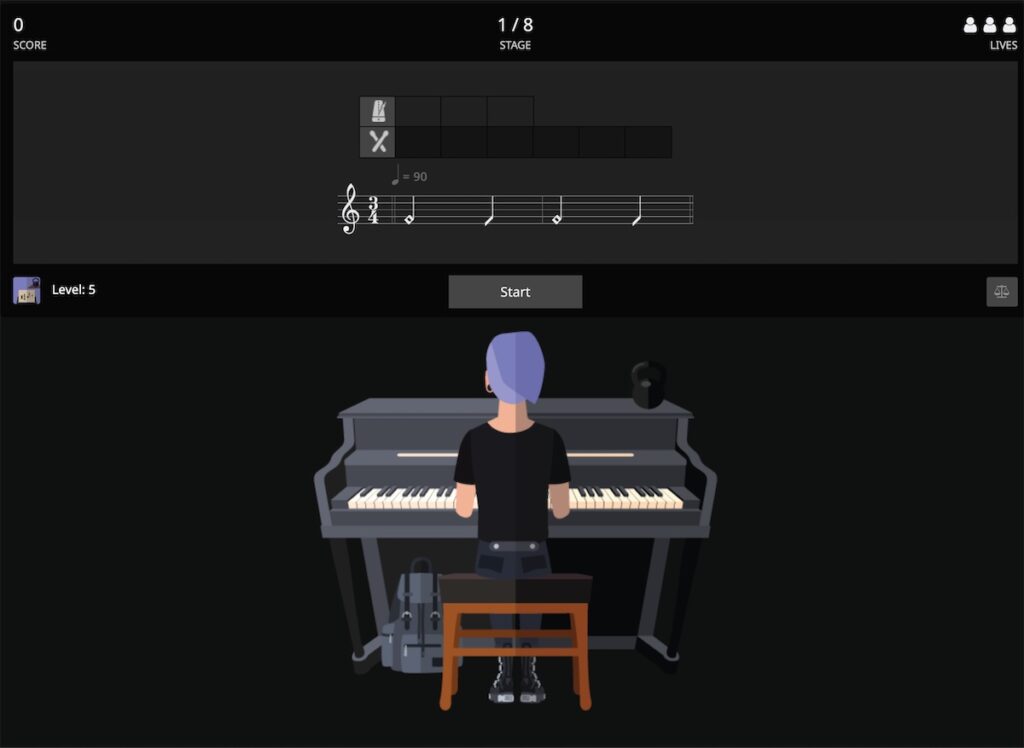
What’s the difference between 12/8 and 6/8?
6/8 is also a compound meter, as it has two strong beats per measures. Each strong beat is broken down into three eighth notes, making six eighth notes per measure. This means that two measures of 6/8 with equal one measure 12/8
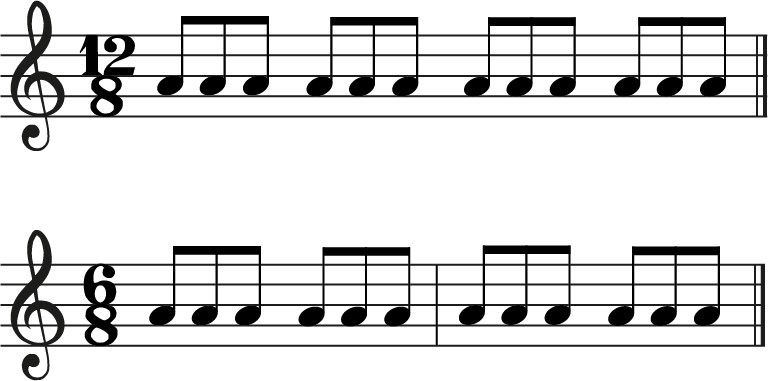
The between them is that the first beat of the bar usually has a stronger accent than other beats. So 6/8 would have two of these ‘first beat’ in the same space and 12/8 has only one. This distinction is subtle though and can be hard to spot.
‘Dam the river’, written by Alice in Chains is a good example of this idea. The opening guitar riff sound in 12/8 as we can clearly hear a strong ‘first beat’ every 12 eighth notes.
When the vocals come in, the song moves into 6/8 as the guitar riff changes and the vocals follow this new meter.
A Link Between 4/4 and 12/8
On the face of it 4/4 and 12/8 are quite different time signatures. 4/4 is a simple meter and 12/8 is compound. However, they both have four strong beats per measure. This means that if we play three notes per strong beat in 4/4 (by using a triplet), it would sound the same as a measure of 12/8.
This is a great way to think about the meter 12/8.
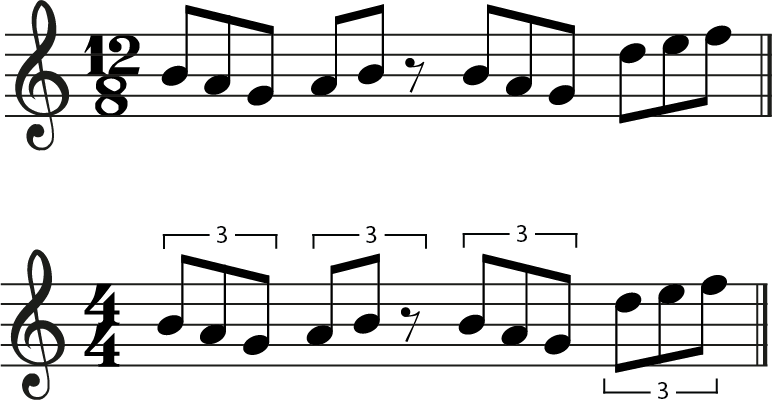
What next…?
If you want to learn more about time signatures, check out our complete guide to meters.
